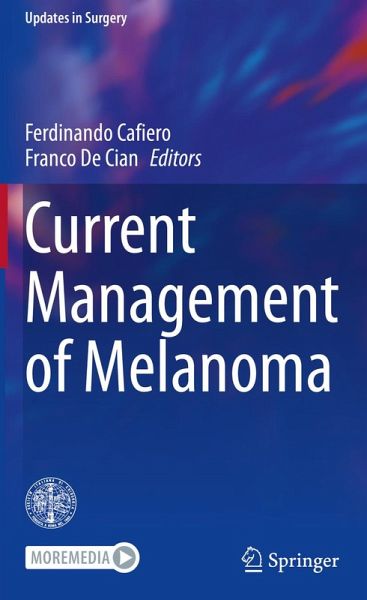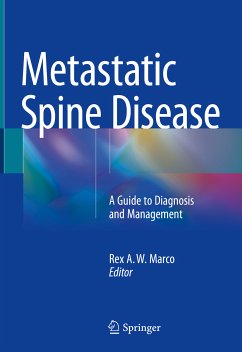
Current Management of Melanoma (eBook, PDF)
Versandkostenfrei!
Sofort per Download lieferbar
40,95 €
inkl. MwSt.
Weitere Ausgaben:

PAYBACK Punkte
20 °P sammeln!
In the last decade, the clinical management of melanoma has become more effective: basic clinical studies, randomized clinical trials, and new drugs have greatly improved the prognosis of patients, both in the initial and in the advanced stage of the disease.This book offers a wide and up-to-date overview of the multidisciplinary treatment of melanoma. Among the topics discussed, there are the role of sentinel lymph node biopsy and the radical dissection, following the results of international randomized clinical trials, in particular MSLT-II. The last chapters are focused on new medical treat...
In the last decade, the clinical management of melanoma has become more effective: basic clinical studies, randomized clinical trials, and new drugs have greatly improved the prognosis of patients, both in the initial and in the advanced stage of the disease.
This book offers a wide and up-to-date overview of the multidisciplinary treatment of melanoma. Among the topics discussed, there are the role of sentinel lymph node biopsy and the radical dissection, following the results of international randomized clinical trials, in particular MSLT-II. The last chapters are focused on new medical treatments in adjuvant, neoadjuvant, and metastatic settings.
The volume has been written for all the professionals involved in melanoma treatment, such as general surgeons, surgical oncologists, medical oncologists, dermatologists, radiotherapists, and nuclear medicine physicians.
This book offers a wide and up-to-date overview of the multidisciplinary treatment of melanoma. Among the topics discussed, there are the role of sentinel lymph node biopsy and the radical dissection, following the results of international randomized clinical trials, in particular MSLT-II. The last chapters are focused on new medical treatments in adjuvant, neoadjuvant, and metastatic settings.
The volume has been written for all the professionals involved in melanoma treatment, such as general surgeons, surgical oncologists, medical oncologists, dermatologists, radiotherapists, and nuclear medicine physicians.
Dieser Download kann aus rechtlichen Gründen nur mit Rechnungsadresse in A, B, BG, CY, CZ, D, DK, EW, E, FIN, F, GR, HR, H, IRL, I, LT, L, LR, M, NL, PL, P, R, S, SLO, SK ausgeliefert werden.












